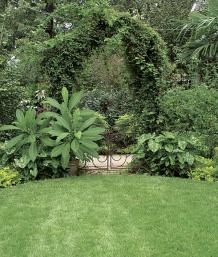
I’ll admit it. When I have a hard time convincing a client to let me create the sweeping arcs, spirals, and semicircles I love, I simply say, “I’d like to create some curves—voluptuous curves.” Slowly, a smile appears across her—or his—face.
Why is the idea of a voluptuous curve so compelling? I think it relates to our time as infants, when we nestled within the enclosing arms of our mothers. A mother’s body serves as a child’s first landscape—a home, a haven, a harbor. So it may be that shapes that swell, curves that contain, lines that carve out space delight us on some deep and unconscious level.
But it’s not just the shape of the human body that offers us images for making pleasing curvilinear lines. Think of the gracefulness of an oxbow of a river, the meander of a stream, the inward curving eddies found in the lee of a stone caught in a rushing brook.
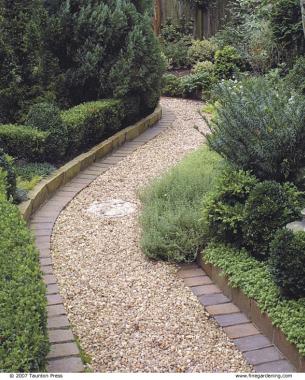
Studying the movement of liquid through such watercourses can teach you how to draw the beautiful line upon your land. The Japanese did just that: Young designers would trek into nature to study streambeds, islands, waterfalls, and other landforms. Then they would return to their cramped cities and, in the tiny spaces available to them, recreate abstracted versions of the sweeps and curves they had found in nature.
In Japanese and Chinese gardens, where these design ideas are so recognizable, such curves stand in stark contrast to the buildings that define their edges. Walls, which rise high and run straight, usually protect the garden from the street. These gardens are bounded by architecture on all sides, enclosed by straight lines that define the garden space. Within the leftover, often rectangular, space, curves feel wonderfully right to the viewer, in part because they refer to those found in nature, and in part because they offer such a stark contrast to the strict linear geometry of their setting. These voluptuous curves are the yin of nature that completes the yang of the architecture.
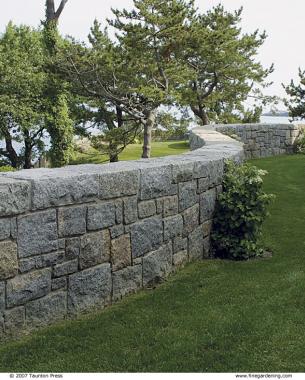
When I’m trying to make my point to a client about the beauty of curves, I’ll grab a rake or a shovel, or even a stick, to draw a sinewy line upon the earth. Sometimes I use a hose or a rope to express the elegance of an S curve. Lately, I’ve taken to keeping cans of orange biodegradable spray paint in my car for just this purpose. I love to draw out the unfurling of a fern frond, or the inward spiraling of a path up to the top of a mount, or the location of a pinched “waist” in a walkway, like an hourglass shape on the land. As I sketch, I feel as though I am caressing the ground I walk upon, honoring it by giving it form, by offering up the most beautiful silhouette I can create. No matter what kind of garden I’m designing, finding the beautiful line is my perpetual quest.
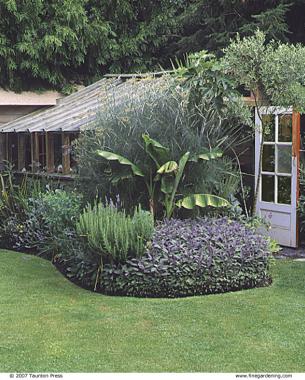
Recently I sketched a plan for a large garden at a college. I had studied the site from every angle and felt that the design was perfect, except for a central panel of lawn, which ended up looking like a wedge of pie. It was not what I wanted, and I felt stuck. As I often do, I brought the problem to a colleague and friend. He took one look at the design and, with simple sweeps of his grease pencil, turned the wedge shape into the far more elegant lines of a pear. Yes, that was it, I told him. With the redrawing of those straight lines into graceful curves, the design finally gelled.
I don’t mean to imply that every design benefits from the presence of curves, but I’m not far from that stance. I encourage you to bring curvaceous lines into your garden’s design. But when you start, don’t be surprised if you can’t stop. After drawing out pleasing silhouettes that define the edge of a planting bed as it meets the lawn, you may soon find yourself wanting to add the rolling three-dimensional forms of hills and vales to your site. Eventually, you may become even bolder, creating curvy sculptural effects with trees that arch or have rounded forms. As you create these appealing lines and shapes, I’ll bet that you feel a more intimate connection to your land.

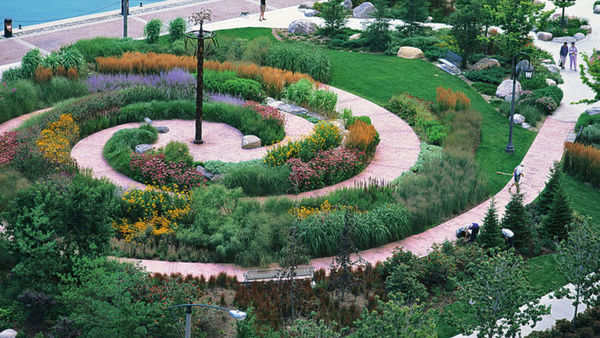


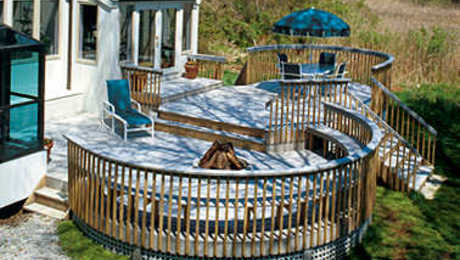
















Comments
Log in or create an account to post a comment.
Sign up Log in